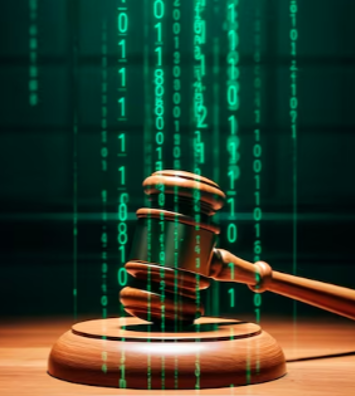Article written by Clyde Shuman
The U.S. Court of Appeals for the Federal Circuit, in a precedential opinion, has held that a pre-critical date letter sent in response to a request for quotation and containing detailed bulk pricing information for products containing a patented design, as well as a price chart and specific commercial terms, constituted a commercial offer for sale of a claimed design, triggering the on-sale bar under 35 U.S.C. § 102(b), reversing a district court grant of summary judgment of no invalidity on that basis.[1] Junker v. Medical Components, Inc., et al., Appeal No. 2021-1649.
By way of background, the design patent at issue claims “[t]he ornamental design for a handle for introducer sheath, as shown and described.” Larry Junker, the inventor of the claimed design, filed the application on February 7, 2000, making February 7, 1999, the critical date for analyzing the on-sale bar under § 102(b).
In the late 1970s, Mr. Junker started a company for purchasing and reselling catheter kits. These kits typically included a needle, syringe, guidewire, and introducer sheath that were used for inserting a catheter into the vein of a patient. Mr. Junker’s company also designed and manufactured some components in the kits, including the introducer sheath. In the mid-1980s, Mr. Junker began developing a new design for the introducer handle that made it easier for doctors to grasp the introducer sheath during catheter-insertion procedures.
Mr. Junker reached out to other companies to handle the actual manufacture of his new design. Eventually, in 1998, Mr. Junker developed a business relationship with James Eddings, the founder of a medical device company called Galt Medical. In September 1998, Mr. Eddings informed Mr. Junker that Galt could manufacture Mr. Junker’s product. Around this same time, Mr. Eddings also founded a new company, Xentek Medical, to develop, manufacture, and sell tearaway introducer sheath products.
Mr. Eddings later enlisted the help of an engineer, Richard Gillespie, to sketch out Mr. Junker’s proposed design. Mr. Gillespie’s sketch, however, lacked the handles that Mr. Junker had envisioned. In a fax dated December 16, 1998, Mr. Junker relayed his critiques of the sketch to Mr. Eddings, noting the absence of larger, rounded portions on the handle and providing a rough sketch of his design as he had imagined it. Mr. Eddings asked Mr. Gillespie to modify the sketch accordingly.
In January 1999, Mr. Eddings’ company, Xentek, developed and provided to Mr. Junker a prototype of the product that included all of the features of his design, including (importantly) a handle with Mickey Mouse ears.
In early January 1999, Mr. Eddings, through Xentek, contacted Boston Scientific Corporation regarding a peelable introducer sheath product. In response to a request from Boston Scientific, on January 8, 1999, Xentek sent Boston Scientific a letter detailing bulk pricing information for variously sized peelable introducer sheath products. The January 8, 1999 letter also included a price chart and specified that the “prices are for shipment in bulk, non-sterile, FOB Athens, Texas on a net 30-day basis.”
Mr. Junker sued MedComp for design patent infringement in 2013. The parties cross-moved for summary judgment on, inter alia, invalidity under the statutory on-sale bar. At issue was whether the January 8, 1999 letter from Xentek to Boston Scientific—sent before the critical date—was a commercial offer for sale of a product embodying the claimed design. The district court held that it was not as a matter of law, finding that the letter was a preliminary negotiation, not a definite offer, focusing on the letter’s use of the word “quotation” and conclusion with an invitation to further discuss specific requirements. Per the district court, the presence of numerous, specific, commercial terms (e.g., payment terms, shipment terms, delivery conditions) in the letter did not outweigh other language suggesting that Xentek and Boston Scientific were engaged in preliminary negotiations.
On appeal, the Federal Circuit began by noting the parties’ agreement that: (i) the January 8, 1999 letter speaks for itself; (ii) the products described in the letter embody the claimed design; and (iii) the claimed design was ready for patenting. As such, per the Court, this reduced question on appeal to whether the January 8, 1999 letter was a commercial offer for sale of the claimed design, or merely a quotation signaling the parties were engaged in preliminary negotiations. The Court held that the letter was a commercial offer for sale of the claimed design, “look[ing] to the specific facts and circumstances presented in this case.”
Quoting its decision in Merck & Cie v. Watson Lab’ys, Inc., 822 F.3d 1347, 1351 (Fed. Cir. 2016) , the Court noted that “[o]nly an offer which rises to the level of a commercial offer for sale, one which the other party could make into a binding contract by simple acceptance (assuming consideration), constitutes an offer for sale under § 102(b).”
In this case, the Court found that, as stated on the face of the January 8, 1999 letter, Xentek was directly responding to a “request for quotation” from Boston Scientific, and the letter was addressed to Boston Scientific alone. Per the Court, this signaled that the letter was not an unsolicited price quotation or invitation to negotiate, but rather a specific offer to Boston Scientific to take further action. The Court further noted that the letter contained several necessary terms typical for a commercial contract, including providing specific delivery and shipment conditions, as well as a payment term. Importantly, the Court noted that the letter specified multiple different purchase options for its peelable sheath products.
Although the letter concluded with an invitation to further discuss Boston Scientific’s specific requirements in person, the Court, quoting precedent, said , “expressing a desire to do business in the future does not negate the commercial character of the transaction then under discussion.” Per the Court, “The completeness of the relevant commercial sale terms in the letter itself signals that this letter was not merely an invitation to further negotiate, but rather multiple offers for sale, any one or more of which Boston Scientific could have simply accepted to bind the parties in a contract.”
As with other communications with similarly complete and definite commercial terminology that were held to be commercial offers for sale under § 102(b), the Court noted particularly that the January 8, 1999 letter contained all the required elements to qualify as a commercial offer for sale. Per the Court, “That is sufficient to invoke § 102(b)’s on-sale bar.”
The Court rejected Mr. Junker’s argument that the letter omitted essential terms—product size and purchase quantity—and thus was not t an offer that could be made into a binding contract by simple acceptance, finding this standard too stringent. Rather, per the Court, “Under § 102(b), the question is merely whether there is an offer for sale… That there were multiple offers does not mean that there was no offer to be accepted. And that the letter does not specify the exact amount Boston Scientific desires likewise does not mean that there is no offer to be accepted.”
The Court also rejected Mr. Junker’s argument, seconded by the district court, that the January 8, 1999, letter was merely a price quotation inviting further negotiations, not a definite offer. Quoting Restatement (Second) of Contracts § 26 cmt. c, the Court said , “But just as the word ‘offer’ does not necessarily mean that an offer is intended, so the word ‘quote’ may be used in an offer.” The Court pointed out that, as opposed to the January 8, 1999, letter, a quotation typically leaves many terms necessary to a contract—e.g., place of delivery, payment terms—unexpressed. Per the Court, citing Corbin, “Where, however, ‘the quotation . . . contains detailed terms,’ as is the case here, ‘it may well be deemed an offer.’”
The Court concluded that “the specificity and completeness of the commercial terms in the letter outweigh the three references to ‘quotation’ and mention of possible future discussions. Taken as a whole, the overall language of the letter signals Xentek’s intent to make a commitment and invite Boston Scientific to act rather than merely negotiate.”
[1] The Court did not reach the other appealed issues, namely, the district court’s judgment of infringement and damages award.



